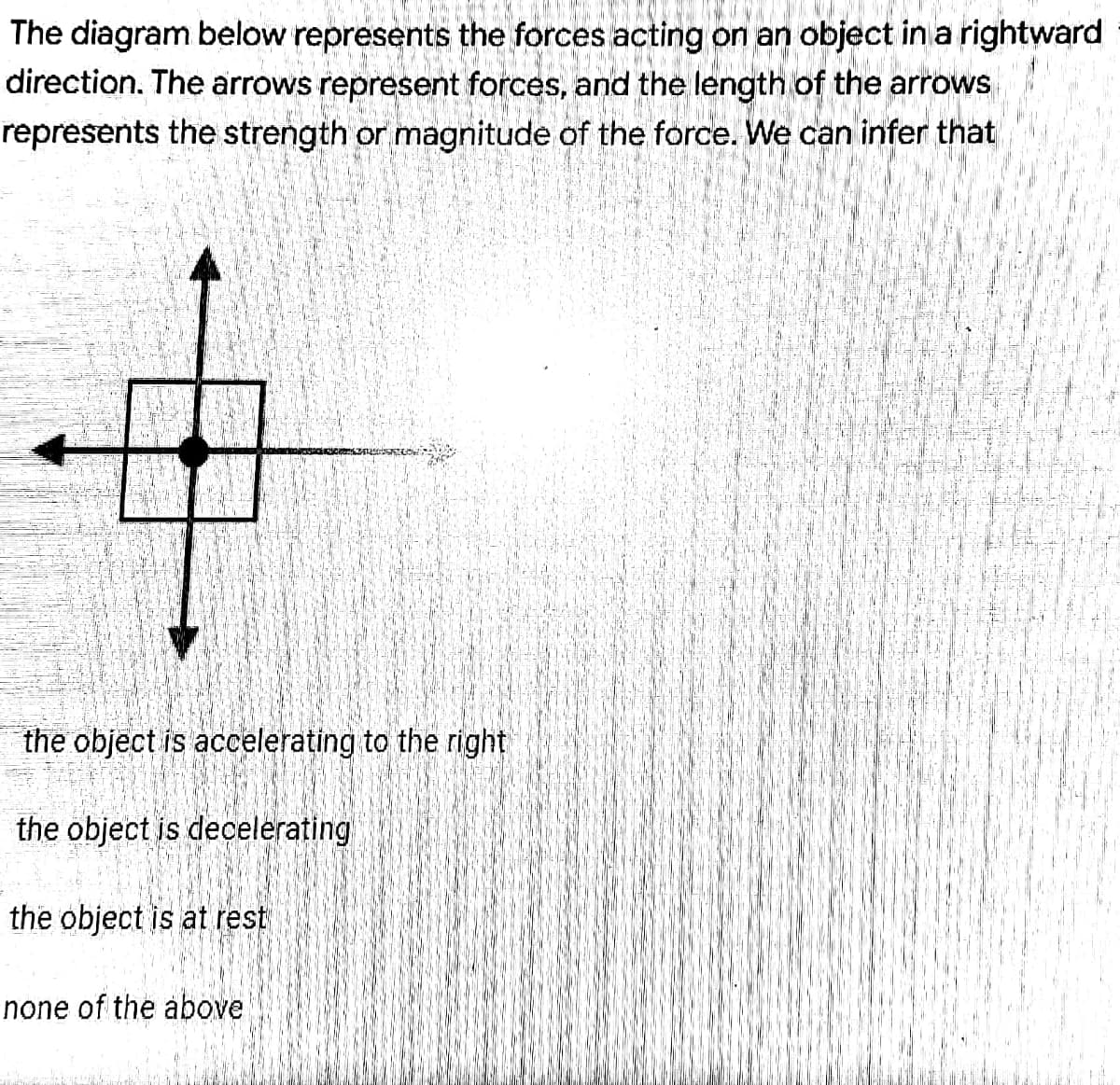The diagram below represents the forces acting on an object in a rightward direction. The arrows represent forces, and the length of the arrows represents the strength or magnitude of the force. We can infer that
The diagram below represents the forces acting on an object in a rightward direction. The arrows represent forces, and the length of the arrows represents the strength or magnitude of the force. We can infer that
Glencoe Physics: Principles and Problems, Student Edition
1st Edition
ISBN:9780078807213
Author:Paul W. Zitzewitz
Publisher:Paul W. Zitzewitz
Chapter3: Accelerated Motion
Section: Chapter Questions
Problem 72A
Related questions
Topic Video
Question

Transcribed Image Text:The diagram below represents the forces acting on an object in a rightward
direction. The arrows represent forces, and the length of the arrows
represents the strength or magnitude of the force. We can infer that
the object is accelerating to the right
the object is decelerating
the object is at rest
none of the above
Expert Solution
This question has been solved!
Explore an expertly crafted, step-by-step solution for a thorough understanding of key concepts.
This is a popular solution!
Trending now
This is a popular solution!
Step by step
Solved in 2 steps with 1 images

Knowledge Booster
Learn more about
Need a deep-dive on the concept behind this application? Look no further. Learn more about this topic, physics and related others by exploring similar questions and additional content below.Recommended textbooks for you

Glencoe Physics: Principles and Problems, Student…
Physics
ISBN:
9780078807213
Author:
Paul W. Zitzewitz
Publisher:
Glencoe/McGraw-Hill

Glencoe Physics: Principles and Problems, Student…
Physics
ISBN:
9780078807213
Author:
Paul W. Zitzewitz
Publisher:
Glencoe/McGraw-Hill